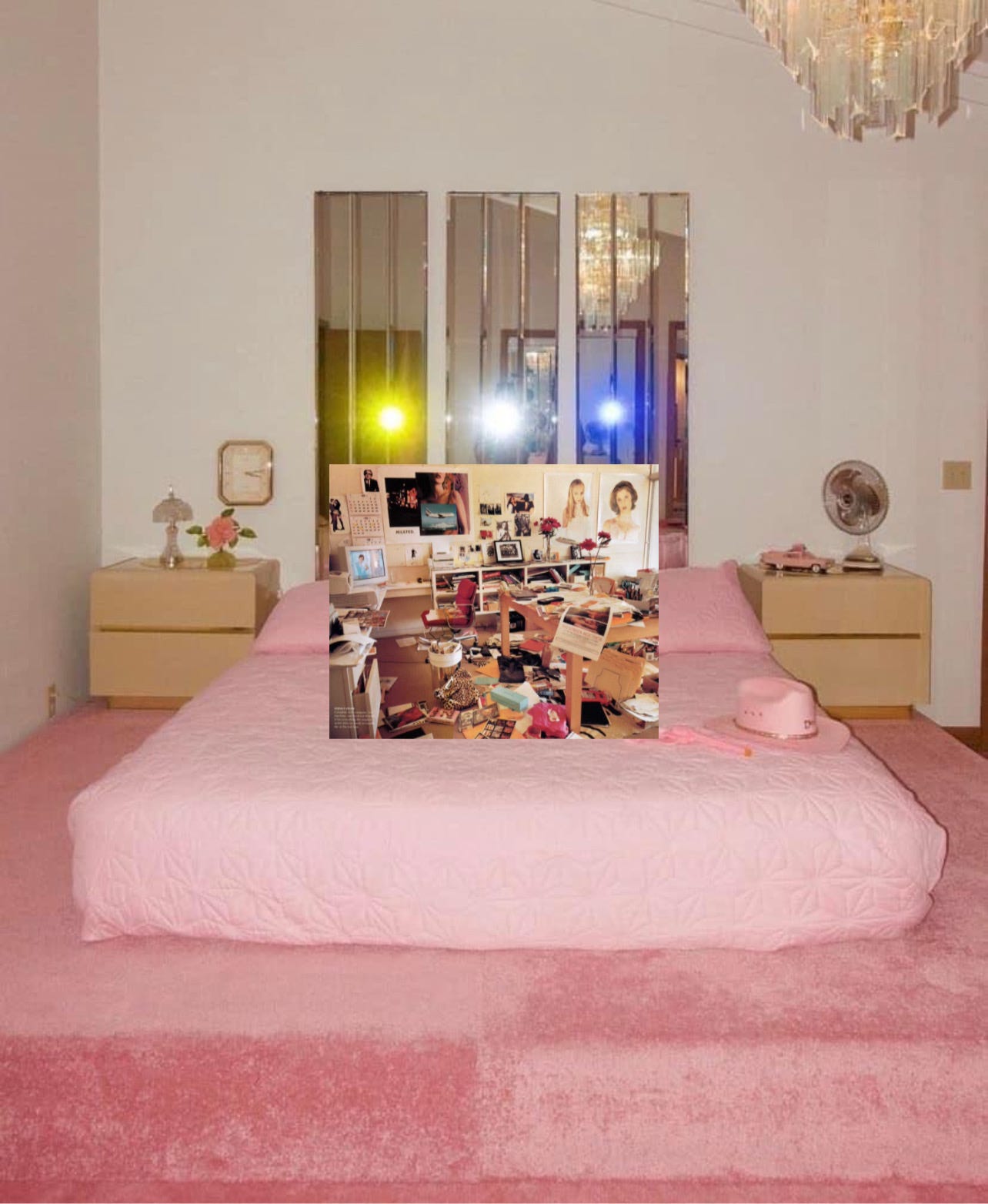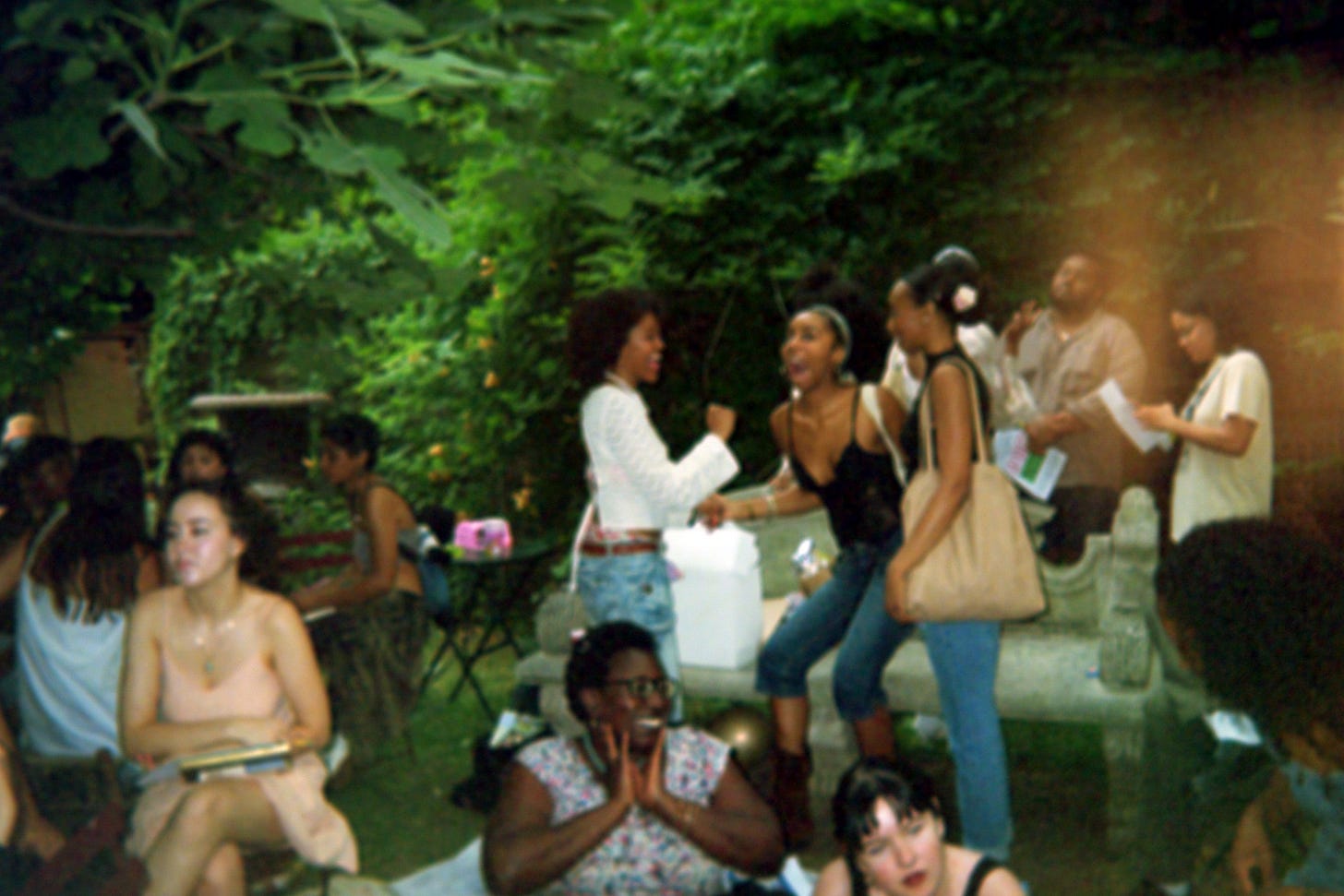id girl
The id girl is untamed and instinctual. She isn't driven by the pressure to conform or be noticed but is instead guided by her id. Her actions are primitive and childlike as she expresses her desires and emotions playfully, unconsciously, spontaneously, sincerely, and freely. This playfulness and sense of whimsy is effortless, a natural state of being. Head empty—no thoughts—embodying the divine feminine. Hedonistically guided by the pleasure principle, and self-indulgent to the point of excess.
Think: Bella Baxter in Poor Things or Charli XCX’s Brat. To be an id girl is to be unconstrained by identity and awareness. It’s being in the moment and in your body and in nature and in your bag.
It’s a claim to artistry even before you’ve developed into your final form.
a claim to artistry
Art can be created by anyone who gives themselves permission to create.
nature
Several years ago, the Italian artist Jessica Rosalind Carroll, who makes art in multiple mediums, began specializing in sculpture, utilizing materials like marble and terracotta. She became obsessed with the inner lives of honey bees and their role in regulating our environment, an obsession that sprung from the surrealist symbolism in her dreams. If artists work through surrealist symbols—universal, archetypal motifs of our collective unconscious—that spontaneously arise in dreams, they can synchronize the feminine, the body, sensuality and nature, rooting themselves and their art as unalienated, active agents in the natural world.
The honey bee is a particularly salient archetypal image because its symbolism contains multitudes: they sting us, they feed us, they play an important role in our ability to breathe, they're a nuisance when they buzz around, they have a social strata with a queen, and we're rapidly losing the honey bee due to our ongoing climate catastrophe. All of this makes the honey bee, similar to Agnes Denes’ sheep, a site for intervention and inquiry of our relationship with the Anthropocene, as well as a symbol of hope for it.
Wolfgang Laib, a German ecological artist whose work can be seen at the Museum of Modern Art, mines the symbolism of the bee for its eco-interventionist potential, from the angle that pollen is manifestly pure: “It’s the essence of the flower, the male seed for flowers,” “the beginning of life,” and all of life’s attendant vagaries, from the seasons changing to death itself. Like Carroll, many of the materials he utilizes for his meditative, yellow installations are bee-related, namely beeswax and pollen.
Laib, who has collected pollen since the mid-90s, is aware of how small yet significant Pollen is. The smallness of things, ironically, often requires a heroic effort, whether it’s one’s cognitive faculties or the high pressure and high temperature needed for a diamond to take its form or gathering specks of material to create a larger artwork.
Life itself, at once slippery and hard to grasp, yet a tremendous burden to carry the weight of, is represented in Laib’s chosen symbolism: “The essence of all your experience is coming into an artwork. It is as simple as that but also as complicated as that.”
Simplicity and complexity, smallness and bigness, are the same thing, when art—and artmaking—is viewed as a container for essences.
collage art and girlhood
Collage art combines appropriation and novelty, transmuting appropriation to novelty through that appropriation, creating new meanings from its essences. It is often invalidated because of anxieties in our culture around authenticity, legitimacy, genius and artistic integrity, which are panics. Just like the earth doesn’t belong to anyone in particular; the only lone genius is nature itself.
Collage and girlhood both obfuscate authorship.
Think: The stylized mess of Sofia Coppola’s office or a young girl’s bedroom captures the inchoateness and underdeveloped nature of the id girl. The entropy of indie sleaze and girly/cute-sprezzatura functions similarly, concealing aesthetic vulnerabilities through disorder. This stylized mess, like a collage, allows its practitioner to avoid committing to a single aesthetic. A refusal to occupy a specific aesthetic lane provides refuge for novelty-seeking aesthetes, who seek to restore the novelty of the past by creating a mimetic patchwork—a collage—of it.
playdate: hot literati x princess babygirl at elizabeth st. garden, a literary id girl event
IG: @princessbabygirlforever / Tiktok: @princessbabygirlforever / Youtube: @princessbabygirlforever


















this is something serious. Love this ⭐️🩷
Play date was so wonderful !!🩷